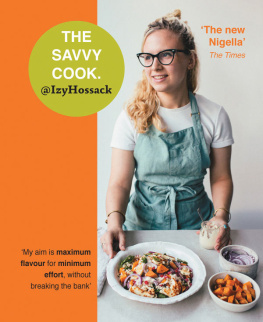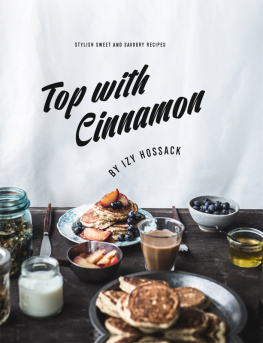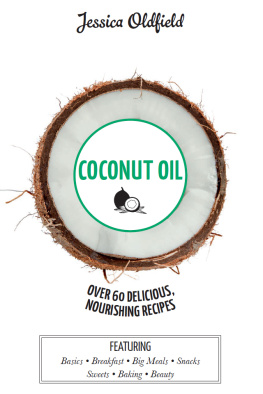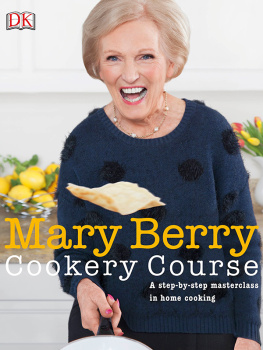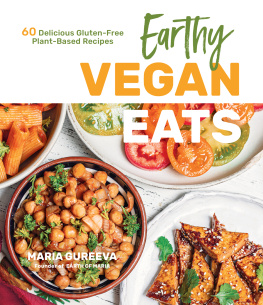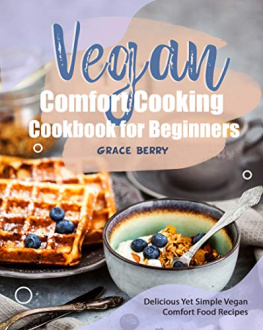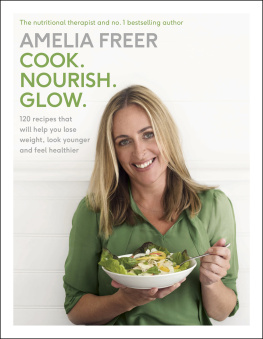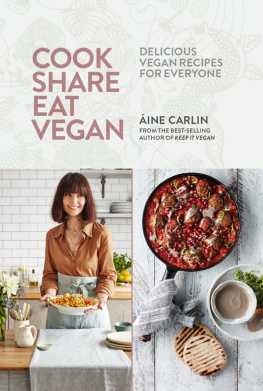Select one of the chapters from the and you will be taken to a list of all the recipes covered in that chapter.
Alternatively, jump to the to browse recipes by ingredient.
Look out for linked text (which is in orange) throughout the ebook that you can select to help you navigate between related recipes.
Lots of my friends find the idea of cooking a bit daunting. Its not that they dont have the ability to make themselves a meal, but they are lacking in the confidence that they can make something delicious and inexpensive. As someone starting university this year, I wasnt sure how to tackle the new challenges Id face. Cooking in a small, basic kitchen is a challenge in itself many of us dont have a lot of equipment, fridge/freezer or general storage space. Along with that, budgeting a pay cheque or weekly stipend of loan money, which barely covers your rent, is a scary prospect. On top of all that, youd like to be healthy! But you dont have the cash to splash on daily avocado toast and the idea of having to cook kale freaks you out. You stand in the kitchen at 7pm peering into the fridge wondering what to make with the random head of cauliflower you bought on a whim because it was on offer. Another challenge: you have no bloody idea what to cook.
Thats where this book comes in helping overcome the idea that healthy, cheap cooking is arduous and tasteless, for a new cook operating on a tight budget and a busy schedule. With things like menu plans, clever alternatives to meat (although I include omnivore options, all my recipes are vegetarian), dishes that can be prepped ahead of time and ideas for giving last-nights leftovers a makeover, these recipes will be kind to your body, wallet and free time. Theyll also give a little help to the earth. Consuming fewer animal products, and more local, seasonal food in general is a simple way to reduce ones environmental impact, boost your health and leave you with some extra moolah. Its not about health fads, antioxidants or obscure ingredients. Just honest, nourishing and delicious cooking that will make you glow inside and out!
THE BASICS
Must-have Kitchen Tools
Essential
CHEFS KNIFE a good chefs knife saves time and is also safer to use. Get one about 20cm long from the tip of the blade to the end of the handle. I like Sabatier knives as they are good-quality and not too expensive. Remember, a blunt knife is more likely to slip on food, leading to accidents.
PARING KNIFE a smaller knife, for small, precise slicing jobs like removing the tops from strawberries.
WOODEN CHOPPING BOARD wood is better than plastic for hygiene, your knives and the environment.
BAKING TRAY use a flat one with a slight rim.
WOODEN SPOON use for baking, sauteing, stirring sauces and grains.
SILICONE SPATULA flexible and good for scraping sauces out of pans, stirring porridge, risotto or bread dough, sauteing and scraping cake batter from bowls.
METAL SPATULA (FISH SLICE OR PANCAKE TURNER) use for flipping pancakes or flatbreads, roasted vegetables and removing food from frying pans.
MEASURING SPOONS essential for baking! You can use a non-measuring teaspoon for spices when you are cooking but when baking you do need a set of measuring spoons.
DIGITAL KITCHEN SCALES use for weighing out everything, including liquids such as water and oil (1 millilitre oil or water = 1 gram). Obviously very important in baking.
VEGETABLE PEELER use for peeling butternut squash, or sweet/white potatoes and peeling vegetables into ribbons. Create shavings of cheese (especially Parmesan) or chocolate for decorating cakes.
HAND-HELD BLENDER these often come with attachments to turn it into a mini food processor good for making pesto, pastes, pures, soups and flours.
BOX GRATER this is indispensable for grating cheese, apples, carrots and courgettes.
CASSEROLE DISH OR DEEP ROASTING TRAY needed for any casserole-type dish, such as pasta bakes, pies or bread pudding. At a pinch, it can be used for baking simple cakes or roasting vegetables.
GOOD-QUALITY NONSTICK FRYING PAN you need a medium or large frying pan depending on the number of people you are cooking for. Check that the handle is heat-resistant (Bakelite handles can be placed under high heat) if you are making frying pan .
LARGE, MEDIUM AND SMALL PANS always useful to have a range of sizes! Especially good if they all have lids, but sometimes you can just use a plate or baking tray as a makeshift lid anyway.
MIXING BOWL These are super-useful for baking, but even if you dont like to bake, mixing bowls are always good to have. Toss together a salad in one or mix ingredients for making fritters, frittatas and quiches.
Useful equipment
GARLIC PRESS (GARLIC CRUSHER) I love these because I hate having garlicky hands. And you dont even have to peel the cloves before putting them into a garlic press.
MICROPLANE GRATER for grating the zest of citrus fruits, chocolate, cheese or even garlic (instead of using a garlic press or very finely chopping garlic by hand).
BAMBOO GINGER GRATER amazing! You can grate fresh root ginger without peeling it first. Find them online.
FREESTANDING MIXER OR FOOD PROCESSOR this can take on more heavy-duty kitchen tasks than a hand-held blender, such as making cake batter, blending soup and making breadcrumbs (which you can only do with a hand-held blender if you have the attachment to make it into a mini food processor).
BAKING TINS I like to have a standard 900g loaf tin, a 20cm round cake tin and a 20cm square brownie tin. You can also include a 450g or mini loaf tin, 20cm bundt tin and a 12-hole muffin tin if you like baking.
MEASURING JUG useful for crude measurements of liquid, such as how much vegetable stock or milk to use in a sauce. However, they are prone to inaccuracy so I weigh all my liquids on digital kitchen scales.
Ingredients
Eggs
I use medium, free-range eggs. When baking, always allow the eggs to come to room temperature first place in a bowl of warm (not hot) water and leave for 510 minutes.
Butter
You can freeze butter for up to 3 months and use frozen butter straightaway by grating it. Buy unsalted for baking.
Oils
Buy light, refined olive oil, as it has very little flavour and is perfect for cooking and baking.
RAPESEED OIL another favourite of mine. It is neutral in flavour and has a vibrant yellow colour. I buy cold pressed.
COCONUT OIL makes a good substitute for butter in vegan baking as it is a saturated fat so is solid at room temperature. Virgin coconut oil has a coconut flavour and refined coconut oil (which is cheaper) has no flavour.

